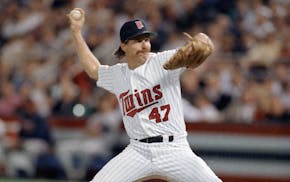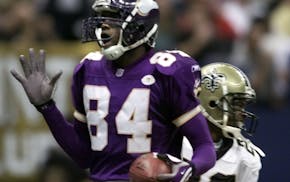This week marks the five-year anniversary of the groundbreaking of U.S. Bank Stadium, which took place on December 3, 2013.
So I sat down with stadium general manager Patrick Talty to discuss how successful the stadium has been compared to expectations.
One of the special accomplishments stemming from the stadium's construction was attracting Super Bowl LII in February, which brought 100,000 visitors to the Twin Cities and had an economic impact of $450 million. The Wilf family and the Vikings played a big role in bringing that game to Minneapolis.
So far, 2.5 million people have visited the building and 90 percent of the $1.1 billion in stadium construction costs went back to Minnesotans. It has helped lead to more than $2 billion in investment to the east side of downtown.
There also have been several major sold-out concerts, the X Games competition in July and upcoming events such as the Final Four in April and the NCAA wrestling championships in March of 2020.
And there is no doubt the Wilfs wouldn't have built the Twin Cities Orthopedics Center in Eagan, which houses the Vikings' new practice facility, if the stadium hadn't been built.
"We knew this building is very unique and very special and versatile," Talty said. "We knew we could do a lot of different things. I don't know that we thought we would have as big a success with private things that we have had, but we knew we'd attract great concerts and great basketball, soccer. We knew we could do those.
"But we definitely think we have done a good job of getting other things. The running club, the skating, bar mitzvahs, weddings, meetings, trade shows on the floor, all those things are things stadiums don't typically do. We have been really happy with that."
Variety of events
Talty came to U.S. Bank Stadium after working for World Wrestling Entertainment in their live events division. He also was assistant GM for the football stadium in Phoenix now named State Farm Stadium.
Talty said that by the time he took the U.S. Bank Stadium job in 2015, Super Bowl LII and the 2019 Final Four already had been booked.
He said stadium officials still are actively pursuing other major events, while also scheduling smaller attractions.
"We're always working on unique events," he said. "International soccer is on the horizon, [we] want to keep trying to attract more international soccer games. We'll always look at college football playoffs, other big events that come along, WrestleMania, things like that, [we're] always interested in those kind of events that bring a big economic impact to the stadium."
Talty said the planning that went into making the stadium a multipurpose venue has made all the difference. Last weekend's U.S. Bank Stadium Classic — the first college basketball games played in the venue, in preparation for the Final Four and an event stadium officials would like to hold annually — demonstrated its flexibility.
"Because it was built [to be] so versatile, we have been able to get all of these different events," he said. "We haven't had any problems. Basketball was a great example of that. It was set up beautifully, looked great, played well, people loved it. If the building wasn't built to host all of these events, it wouldn't have set up so well.
"Knock on wood, all of our events so far have gone well. And our building has allowed us to host these different events. If it wasn't so varied and built that way, we wouldn't have been able to do all of those events."
The Gophers played 13 baseball games in U.S. Bank Stadium last year, and Talty said that going forward, they want to build up fan support for those contests.
"I think it has been a great venue for baseball," he said. "We would love to get more people attending baseball for the Gophers. It's a great venue, we sell beers, it's great times, it's warm. We would love to get more people to come to the Gophers games."
Wilfs focus on fans
Talty said U.S. Bank Stadium's most visible tenant, the Vikings, have been fantastic to work with. He said the biggest reason for that is their focus on fans.
"The Vikings are a great organization, we always enjoy working with them," he said. "They do a great job. The thing that we like about the Wilfs is they put fan experience at the top of their list. They allow us to do stuff to create value and to create a great experience for fans. That's what our mission is — to create memorable events for fans. We're happy to be able to partner with them and do that."
He also said the Vikings' 29-24 victory over the Saints in an NFC divisional playoff game last January — which ended with Stefon Diggs' "Minneapolis Miracle" game-winning catch — was one of the most visible events the stadium has hosted.
Keenum vs. Cousins
Quarterback Case Keenum led the Vikings to a 13-3 regular-season record last season, but the club opted to invest $84 million in free agent Kirk Cousins as his replacement. Keenum eventually signed a two-year, $38 million deal with the Broncos.
Here's how the statistics of Keenum and Cousins compare through 12 games:
Keenum is 6-6 with the Broncos, in third place in the AFC West; Cousins and the Vikings are 6-5-1, good for second in the NFC North. Keenum has completed 62.3 percent of his passes; Cousins has completed 71.3 percent. Keenum has passed for 2,953 yards; Cousins has thrown for 3,490. Keenum has 14 touchdowns and 10 interceptions; Cousins has 23 touchdowns and nine interceptions.
Vikings forgot Cook
No doubt the game plan for the Vikings going into Sunday's 24-10 loss at New England was to utilize Dalvin Cook as a runner and receiver. For one half, they did.
Cook had five of the Vikings' seven first-half runs for 62 yards, an average of 12.4 yards per carry. He also caught a team-high five receptions, out of the Vikings' 15 passes in the first half, for 11 yards. That meant Cook was involved in 12 of the Vikings' 27 offensive plays (or 44.4 percent) in the first half.
But the Patriots found a way to take Cook out of the game.
In the second half, he had four of the Vikings' 11 carries for only 22 yards and he caught three passes in the second half. Cook was involved of only seven of 32 offensive plays in the second half, or 21.9 percent.
Sid Hartman can be heard on WCCO AM-830 at 8:40 a.m. on Monday and Friday and at 9:30 a.m. on Sundays. E-mail: shartman@startribune.com

Sid Instant Replay from 1977: Vikings' Super Bowl loss to Raiders hurt the most

Read Sid's column from 1974, when Ara Parseghian left Notre Dame

Sid instant replay: No greater hero than Twins' Morris in World Series


